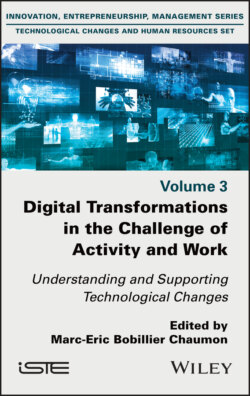Читать книгу Digital Transformations in the Challenge of Activity and Work - Группа авторов - Страница 50
3.5. Applications of virtual reality in industry
ОглавлениеIn industry, virtual reality can be applied in two ways: at the design and training levels (see Moreau et al. 2004; Mujber et al. 2004; Hamid et al. 2014).
For design in industry, virtual reality is mainly used for virtual prototyping, project reviews and ergonomic studies of workstations. Virtual prototyping consists of replacing or supplementing physical prototypes of products or workstations with virtual modeling (Mujber et al. 2004). It is then possible for designers to conduct simulations, evaluate the product and make modifications at a lower cost. For example, Bordegoni and Ferrise (2013) illustrate how a virtual prototype can be used in product evaluation. The system they use is multi-sensory. It includes a haptic arm, a projection screen with stereoscopic vision and speakers. The authors present the use of this system to represent a washing machine. Participants in the study had to follow a scenario to interact with the virtual prototype and the physical prototype of the product.
Virtual prototypes can also be used for project reviews. In this context, different professions meet around a virtual environment and make design decisions on the designed product. For example, in the aeronautics industry, project reviews bring together project managers and the future fitters who will assemble the aerostructure, around virtual prototypes of manufacturing workstations (Sagnier et al. 2019). Finally, it is also possible to use the virtual prototype to carry out ergonomic studies of the workstations. For example, Bernard et al. (2019) simulated helicopter maintenance operations, in order to collect data on the operators’ postures, the biomechanical constraints to which they were subjected, or their mental load.
Virtual reality also allows for virtual assemblies, that is, simulating the assembly of parts of an object (Seth et al. 2011). In this way, we can decide on the assembly sequence of the different parts, determine the physical and mechanical characteristics of the parts, choose the tools to be used and identify factors that may affect the quality of the assembly (Mujber et al. 2004). For example, Jayraman et al. (1997) developed VADE (Virtual Assembly Design Environment), an immersive virtual environment for virtual assembly. The virtual reality system used consists of a head-mounted display and a data glove to detect the user’s hand movements. The system integrates data from CAD (Computer Aided Design) software on tolerances, part location, part orientation, etc. In the virtual environment, the user assembles or disassembles the different parts of an object, perceives the collisions of the parts and can record a trajectory, or reject it.
As for the use of virtual reality in industry training, this mainly concerns maintenance and assembly. For example, the study by Abate et al. (2009) presents a head-mounted display application with a force feedback exoskeleton for maintenance training in the aerospace industry. In this study, users were required to perform eight routine maintenance tasks. Similarly, Stork et al. (2012) propose a semi-immersive system with a wide screen and natural interactions (to grasp objects with the hands) for assembly training in the automotive industry.
Virtual reality is also used to train operators in risk prevention. These applications are developing particularly in the construction sector. For example, Sacks et al. (2013) compared the effectiveness of safety training given by (1) a classroom trainer with a slide show with (2) training involving an immersive virtual environment used alternately by the trainer and the learners. The virtual reality system included a projection screen that allowed stereoscopic vision. The virtual environment represented a construction site. Learners were asked to share their general knowledge of the construction industry, identify risks in the situations presented and explain the behaviors to be adopted. In the same vein, the study by Zhao and Lucas (2015) presented a non-immersive virtual environment to sensitize workers to electrical risks. It allowed users to detect risks while navigating on a construction site. The virtual environment provided information to users on risks and on the behaviors to adopt.
